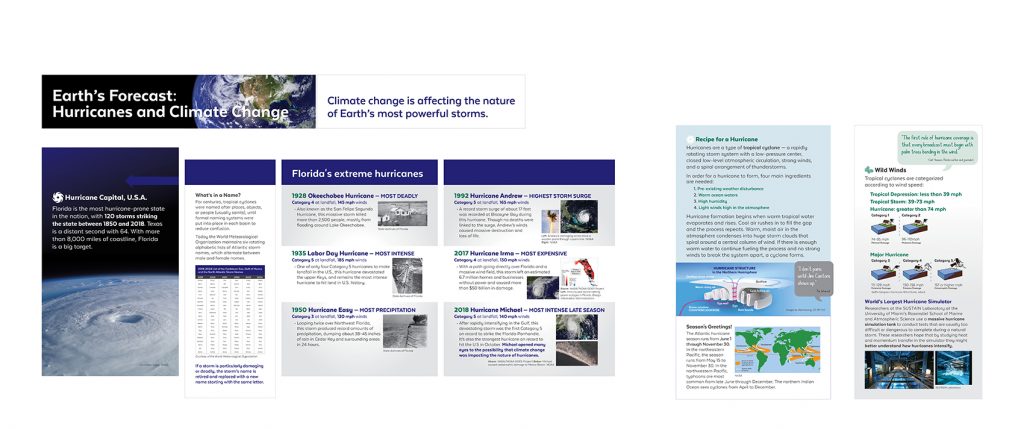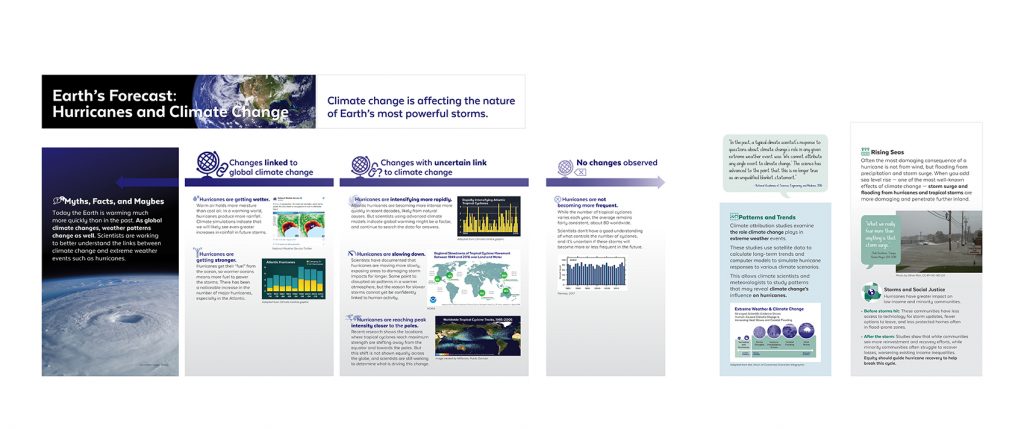Now Available for Download
Displayed at the Florida Museum in 2020, this exhibition offers a scientific overview of Florida’s trademark weather phenomena including information on their formation, naming, categories, and hurricane seasons around the world. Charts and graphics illustrate the facts about climate change-related hurricane trends, while historic and satellite images showcase six historic Florida hurricanes.
Note: The information in this exhibit is accurate as of 2019. The Museum is working to update this material with more recent storm data.
Our Changing Climate: Hurricanes and Climate Change Downloadable Panels
The Florida Museum invites you to build your own exhibition! Download high-resolution exhibit panels that are ready to print and hang at your institution. Native files are available upon request to tailor the exhibit to your region. For more information, contact the Exhibits Coordinator at 352-273-2073 or travelingexhibits@floridamuseum.ufl.edu.
Complete the information below to download the exhibit panel files.
Acknowledgements
This exhibit was made with assistance from Jeff Huffman/WUFT, Allison Wing/Florida State University and Heather Mathis/WTVF.

